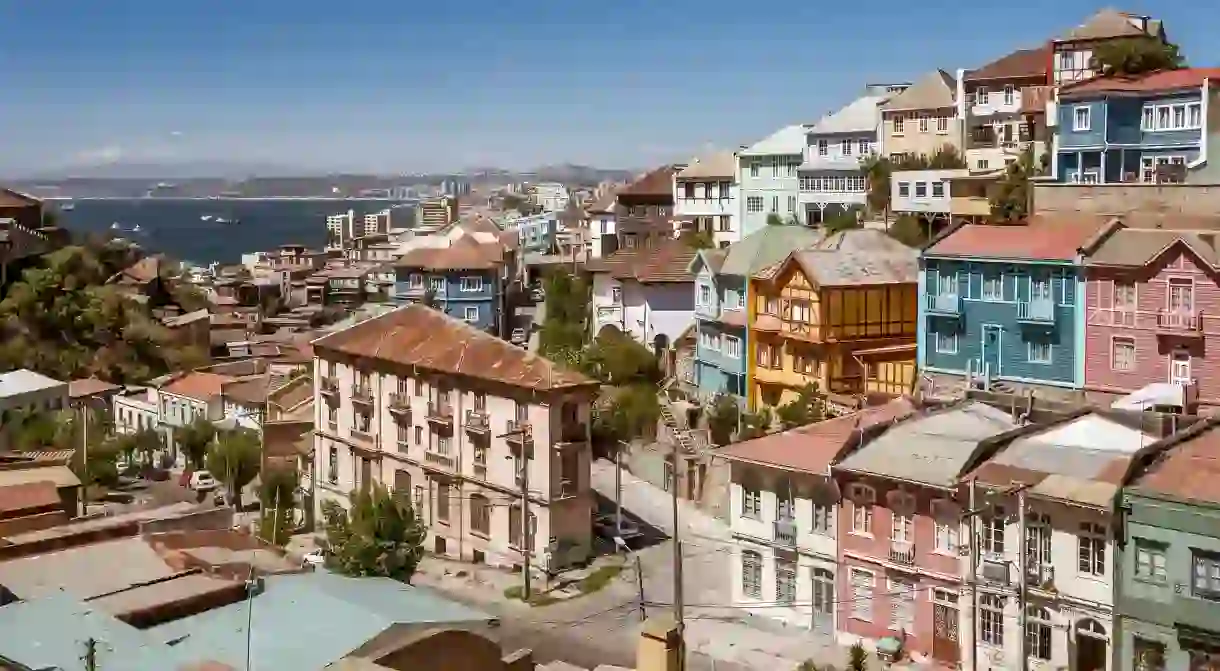Stay Curious: Experience Chile From Your Living Room

As staying in becomes the new normal, Culture Trip invites you to indulge in a spot of cloud tourism. Transport yourself virtually to Chile, and experience the vibrant culture of the South American country without stepping foot outside.
While it’s not the only place to have been described as a land of extremes, Chile is truly worthy of the phrase. At its north is the driest desert in the world, the Atacama Desert, while Chile’s tip, the so-called “end of the world,” is characterized by huge glacial fields, icy islands and fjords. Visitors traveling down the long, thin country will also take in manicured beachside resorts, colonial cities, vineyards in the foothills of the Andes, active volcanoes and thick forests.
And while it may not be possible to experience Chile in person at the moment, that doesn’t mean you can’t get a glimpse of the Andean country from your armchair. So, sit back with a pisco sour and the poems of Pablo Neruda, and bring the diverse landscapes, laid-back atmosphere and buena onda (good vibes) of Chile into your living room.
Eat a classic Chilean empanada de pino
Travel the length of Latin America, and you’ll find empanadas wherever you go. However, in Chile, they’re bigger – one can be sufficient for an entire meal – and served stuffed to the brim with much more than just meat and spices. Chile’s traditional empanada de pino (meat empanada) includes beef and onion mixed with spices, boiled egg, olives and raisins, creating a protein-filled, moreish pastry parcel. They’re so popular that hole-in-the-wall bakeries occasionally sell out by lunchtime. You should be able to find all the ingredients in your local store, so follow this recipe to make your own.

Drink Chile’s national tipple, the pisco sour, or a piscola
The subject of who invented the pisco sour – Peru or Chile – is hotly debated between the two countries, and both claim it as their national drink. While Peru’s version includes egg whites and bitters, the Chilean pisco sour differs slightly; you’ll need lemon juice, sugar, ice and Chilean pisco. If you can’t find pisco, substitute a different type of clear brandy. Alternatively, get yourself in the mood for a party, Chile-style, by pouring Coca-Cola over pisco. This creation, called a piscola, is commonly drunk at celebrations, and is so popular that February 8 has been named Piscola Day.

See Chile’s incredible landscapes from your phone
Aside from its historical cities Santiago and Valparaíso, and surfing in Viña del Mar, Chile’s major draws are its swathes of miraculously untouched natural areas. Luckily, the spectacular geological formations of the Atacama Desert, the glaciers and towering mountains of Torres del Paine National Park in southern Patagonia, and even the magnificent moai statues of Rapa Nui (Easter Island) can now be experienced without even stepping foot on a plane. Download the free Chile 360 app on your mobile device to experience them from your home – if you have VR glasses, even better.

Read the poetry of Pablo Neruda
Pablo Neruda is South America’s most famous poet, and the Nobel Prize winner just so happens to have been born in Chile. On a real-life trip to the country, you’ll have the opportunity to visit three of his former homes, which have been preserved by the Fundación Pablo Neruda. The quirky, colorful houses are filled with art that Neruda picked up during his lifetime, along with mementos of his travels, giving a vibrant insight into the poet’s creative mind.
Neruda is perhaps best known for his odes and poems about love. However, while the poet spent time outside his homeland (as a consul, diplomat and during his three-year exile for communist beliefs), much of his poetry is also suffused with the political unrest that characterized Chile during his lifetime. Indeed, his resistance poetry is often used during various uprisings and marches around the world today.

Get a sense of the spirit of mid-20th-century Chile by reading some of Neruda’s poems, many of which can be found on All Poetry. If you’re not sure where to begin, consider starting with some of his most famous creations: “If You Forget Me”; “A Dog Has Died”; “Every Day You Play”; and “Tonight I Can Write (The Saddest Lines).” Alternatively, for something lighter, go for his “Ode to Tomatoes.”
Travel to Patagonia with Bruce Chatwin
Bruce Chatwin found sudden fame with the publication of In Patagonia in 1977. The book has become a travel-writing classic, and has been toted by many a backpacker traversing South America. The uniquely told travelogue follows Chatwin’s journey from Buenos Aires down into Argentine Patagonia and across to Chilean Patagonia, taking in Punta Arenas, Puerto Natales and the Cueva del Milodón.
Throughout his trip, Chatwin meets fascinating characters, many of whom have emigrated from European countries, recreating their houses back home in Patagonia (there’s a cottage decorated with English flowers and William Morris wallpaper, and estates reminiscent of the Scottish Highlands). Their tales are intertwined with the history of Patagonia’s native inhabitants and the region’s legends, and he even goes in search of stories about Butch Cassidy.

Best of all, Chatwin conjures the wind-scoured, seemingly endless plains that visitors to the region can discover for themselves; for now, the evocative descriptions will have to do.













